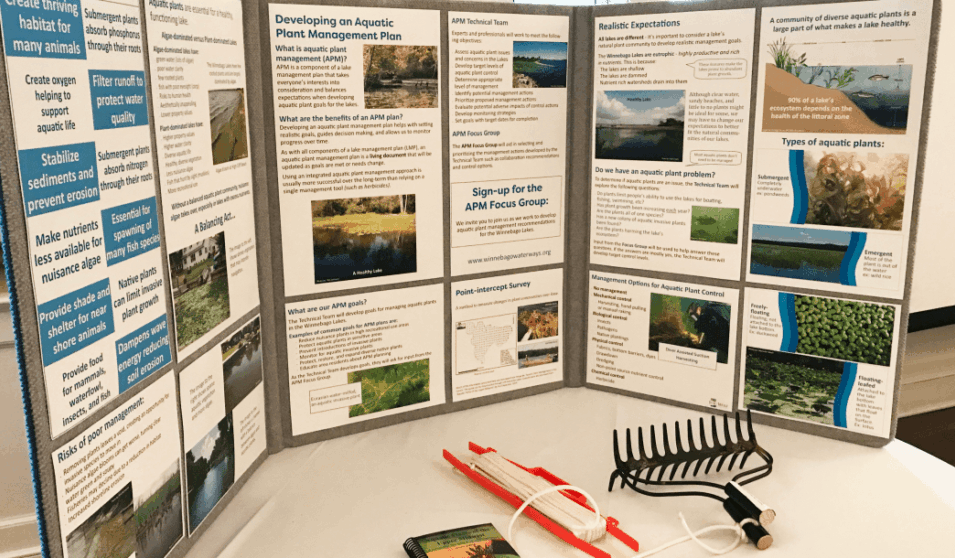Winnebago Waterways celebrated the beginning of the third phase of lake management planning at a kickoff meeting in Oshkosh on Thursday. Entering phase three means the group is ready to start writing their plan, which they hope to complete by late 2018.
“The reason for the kickoff is to remind people we’re here,” said Danielle Santry, Water Resource Specialist for Calumet County Land and Water Conservation Department (LWCD). “Yes we were here two years ago, but now we have a more focused agenda.”
The kickoff meeting also served as an opportunity for watershed residents to sign up for focus groups they're interested in. For example, if they’d like to see aquatic plan management in the system, they can sign up for that focus group and provide feedback to the technical team. Winnebago Waterways wants to avoid creating a plan full of recommendations the general public doesn’t want to implement, said Santry.
Lake Winnebago provides clean drinking water to 250,000 residents and contributes millions of dollars per year to the local tourism industry. It’s home to valued cultural traditions such as ice fishing and boating, but the lake is threatened by harmful algal blooms, nonpoint runoff and aquatic invasive species (AIS).
The lake crosses into three different counties, which makes management by one single entity unlikely, if not impossible. Lake Winnebago and its pool lakes (Poygan, Winneconne and Butte des Morts) have been on the EPA’s impaired waters list for phosphorus contamination, PCBs and total suspended solids since 1998.
“The Lake Winnebago system is really big. You can see it from space,” said Korin Doering, Winnebago Waterways Program Director. “Undertaking a project of this size is a pretty big deal. We need the help of everyone in the system.”
The project is gaining steam, but it came from humble beginnings. Calumet, Fond du lac, Winnebago and Waushara county staff started meeting in 2011 to discuss ways they could work together to clean up the lake. They secured a lake planning grant from the DNR in 2013 and started to lay out phases of the plan.
The first phase was mostly engaging with the community, surveying and holding public meetings. The group wanted to know what residents love about the lakes and what they would like to see improve. For phase two, they brought in a consultant.
“The consultant assessed the political structure and other mechanisms that have helped people manage lakes of this size, and they recommended either going through a non-profit to coordinate it, going through a regional planning commission, or possibly forming a lake commission or district,” said Santry. “We understood that the lake commission or district wasn’t really a favorable option, because the public didn’t want to see another layer of government.”
They took the non-profit route and partnered with the Fox Wolf Watershed Alliance earlier this year. They also hired Korin Doering as the Winnebago Waterways Program Coordinator.
Doering has goals for the watershed beyond the lake management plan, which she says is just the first step in the process. Finishing and implementing the plan would help them leverage funding for a nine key element plan, which is a long-term goal.
“I don’t want to be cheesy about it, but it really is important to us that we get as many people involved with as many different interests as possible, so that everyone’s ideas and needs are included,” said Doering.
Watershed residents are encouraged to attend lake management planning meetings in May. Click here for a list of dates and locations.

